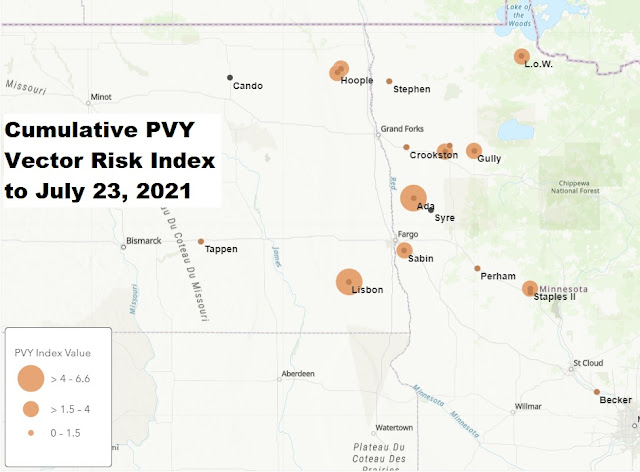Trap Catches to July 23, 2021.
Aphid vector catch numbers jumped for the third week in a row. Total trap catches totaled just over 800 aphids, about 25% of which (195 aphids) were species that can vector PVY. These high capture numbers drove the PVY Vector Risk Index up again this week (by about 65%). Most of the vectors captured (148 aphids) were English Grain aphids - more than twice the number of last week's catch of this species. So the movement of grain aphids to potatoes continues to increase. As small grains continue to mature and harvest begins, the number of grain aphids should decrease, but other vector species may rise. Soybean aphid captures doubled over last week, Corn Leaf and Black Bean aphids increased, and we recorded our first Damson-Hop aphid of the summer.
There were large captures of non-vectors this week, showing overall aphid activity was up. What was interesting about the non-vector species is that the capture was comprised of less than 6 species, which included Spotted Alfalfa aphid (which has been reported from areas in southern MN and ND.
With the increases in PVY vectors, continued scouting and use of crop oils is recommended, insecticides which stop feeding/probing may also prove necessary. Although with the drought conditions and temperatures in several seed growing locations, care should be taken with oils to monitor for phytotoxicity.
We will keep counting. As always, keep on scouting!




No comments:
Post a Comment